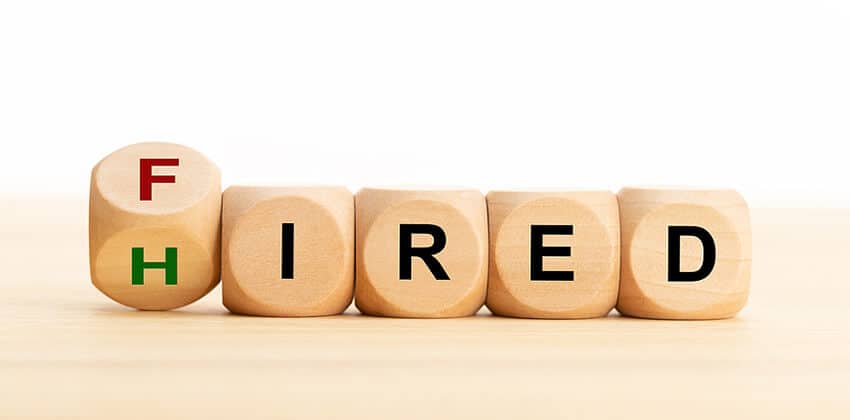
By Sandra A. MacKay
While the estimated time recruiters spend reviewing a resume is arguable, you can be sure today, it’s not much.
In fact, for an experienced recruiter, it’s more likely to be less than 15 seconds.
To be fair, recruiters are swamped with resumes, today. Employers may receive more than 100 resumes for a single opening.
Standing out from the crowd is a necessity, but not easy.
The question before you is: How do you distinguish yourself from the other 99 individuals who have submitted their excellent credentials to the company recruiter for the same job you’re after?
Grab Recruiter Attention with a Great Cover Letter / Email
One important way to differentiate yourself is with your cover letter or cover email when you send (or email) your resume to a recruiter or employer.
A strong, powerful cover letter can actually make things easier for a recruiter to view your credentials against the specific requirements for the job.
Moreover, using the T-format letter (also often referred to the Q letter) literally takes the reader’s eyes from his/her requirements to your experience relevant to that specific requirement.
3-Part T-Format Cover Letter
Most recruiters like this type of cover letter simply because it is so to the point.
This should be a one-page letter with plenty of white space. That white space makes the content stand out. Focus on what you think is most important to the employer.
To create a T-format letter, review the job description, and make a list of the key requirements. This shouldn’t be an exhaustive list — identify the top three or four things the job requires.
Against each one of those requirements, identify your specific experience relevant to the requirement. And, present them on the page in a way that makes them stand out, as you can see below.
1. The Short Opening Paragraphs
Begin your cover letter with a strong opening paragraph that catches their attention, specifies the job you are applying for, and provides them with a good reason to continue reading —
Your very interesting Senior Account Manager opportunity (# 1234567890) posted on your company website caught my eye this morning@ As a senior sales representative with 10 years of experience in technology sales, my experience matches your requirements. I have been leading the [Big Company] account team with over $2.5 million in sales generated for each of the last 2 years, well above our goals.
Below is a comparison of your job’s requirements and my qualifications
2. The Requirements/Qualifications Matches
Next, create two columns in the letter, as in the example above (“Your Needs,” “My Experience”). Use the list of the company’s top requirements you created and your experience relative to each one.
Remember to be brief, but accurate. It may be necessary to reduce the company’s requirements and your experience to a few words that will fit into this layout, as you see in the example below.
| Your Needs: | My Qualifications: |
| 5+ years experience in technology product sales |
2 years, Senior Sales Rep, promoted after 3 years as Sales Rep, [Wireless Tech Company] |
| Strong interpersonal skills | 2 years account team leader; $2.5m Fortune 500 account, supervising team of 3; coordinating efforts of technical and administrative teams with sales team and client; over 11% increase in sales, each year |
| Their third requirement | Third way your experience qualifies you for the job. |
3. The Positive Closing Paragraph
Continue to express your interest, enthusiasm, and fit. Add a strong, positive closing paragraph or two emphasizing what you know about yourself and your ability to contribute
I know that this opportunity will leverage my experience in technology sales, my [Local School] MBA in information technology, and my enjoyment in helping customers leverage the excellent technology you supply. I look forward to hearing from you and discussing this opportunity in detail.
Add an appropriate business closing and your signature (with your LinkedIn Profile’s URL and personal phone number).
Do you ever struggle to find the right way to end letters? See these example letter closings and sign-offs, and more tips.
The Bottom Line on Letters to Recruiters
Whether you use paper sent by “snail mail” or a message sent by email, your objective is to capture the recruiters’ eyes. What could be easier than a short list of their needs and how your specific experience matches each one?
These letters get attention largely because they don’t require eye time. With lots of white space, they are very much like reading newspaper headlines; the eyes quickly grasp what is being presented and make fast assessments. Presumably that attention moves your resume to the “Contact” pile while others are moved to the “No thanks” pile.
Remember also a cover letter should not exceed a single page in length. Sometimes that’s the toughest part!
More About Successful Cover Letters
- What Should Your Cover Letter Contain?
- Are Cover Letters a Waste of Time?
- Cover Letter Tips for IT Professionals
- Executive Briefing Cover Letters
- Effective Resumes and Cover Letters
- Working with Recruiters
About the author…
Sandra A. Mackay is an independent recruiter and outplacement counselor in Massachusetts. When not recruiting for a company in “staffing up” mode, Sandy provides job development services for one of the nation’s largest outplacement firms to its individual clients.
Don't forget to share this article with friends!




